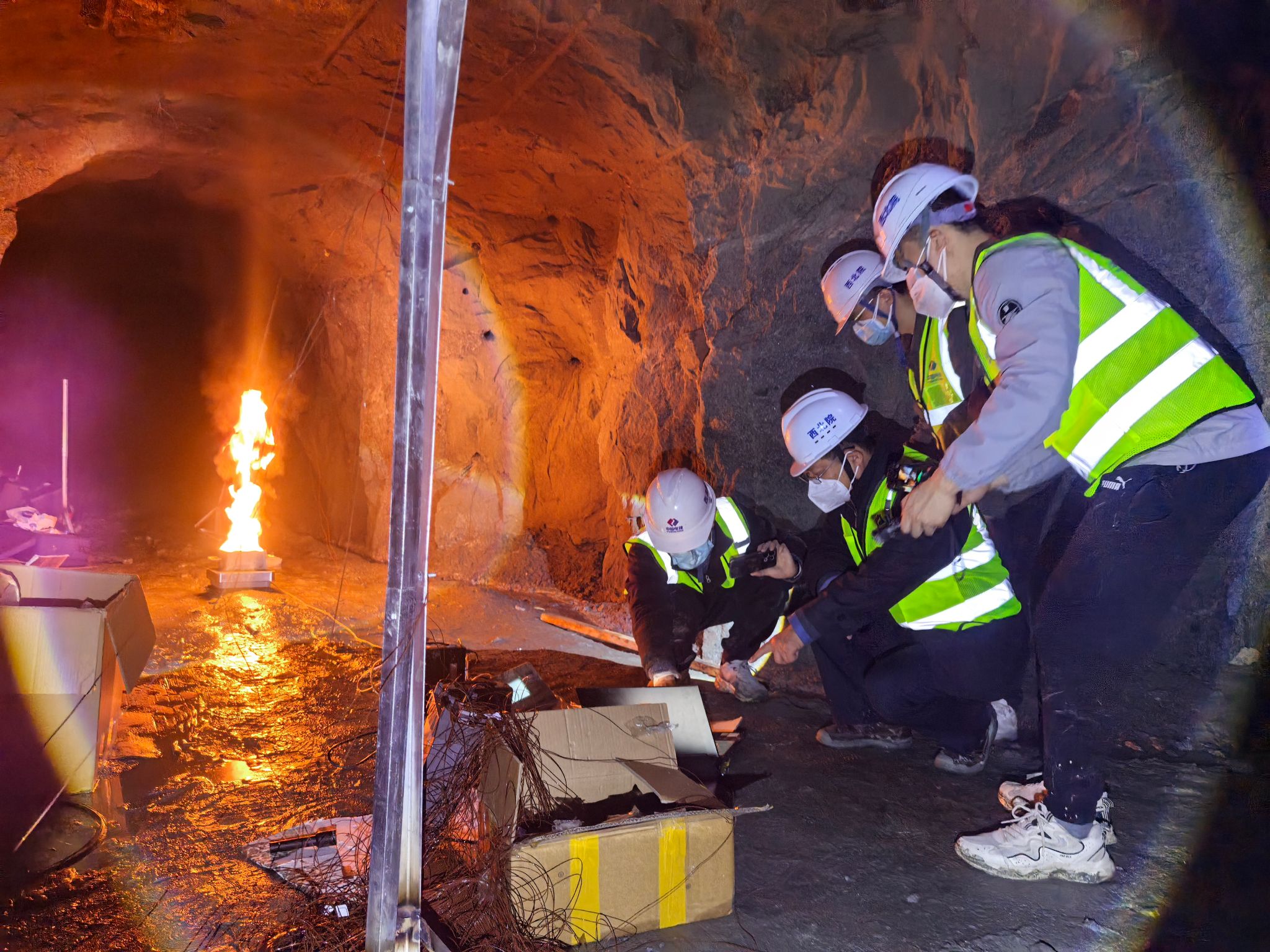As China's large-scale pumped storage power stations develop towards deep underground spaces, the underground powerhouse cave groups of these stations exhibit characteristics such as great burial depth, complex structure, and enclosed space. During the construction and operation processes, multi-source pollutants including exhaust gas from heavy machinery, gases from electrical equipment (e.g., SF6), and harmful gases associated with construction operations accumulate and diffuse in the cave groups. These pollutants are more likely to deposit and remain in the working areas of personnel, and may even form local polluted vortex "dead zones", which seriously threaten the safety of workers and affect their occupational health.
In response to the above issues, an on-site test focusing on the safety guarantee of the working environment in complex cave groups was carried out in an orderly manner on March 20 in the geological exploration adit of the powerhouse of Ningbeishan Pumped Storage Power Station in Ankang City, Shaanxi Province. This test was jointly initiated by the International Joint Laboratory of Low-Carbon Built Environment of the Ministry of Education of Xi'an University of Architecture and Technology, the General Institute of Water Resources and Hydropower Planning and Design, and PowerChina Northwest Engineering Corporation Limited. Professor Li Angui, Director of the International Joint Laboratory of Low-Carbon Built Environment of the Ministry of Education, led his team to the power station to conduct the test.

Main Participants of the Test
The on-site test covers four aspects: smoke diffusion in underground cave groups; propagation characteristics of construction blasting dust in underground caves; underground environmental microorganisms; and on-site tests for high-density heavy gas leakage as well as the drainage of heavy gas pools and heavy gas channels. This test has laid a solid foundation for studying the law of fire smoke diffusion in underground caves of pumped storage power stations and proposing effective ventilation design methods. Meanwhile, it also provides a scientific basis for the compilation of the Guidelines for Fire Safety Assessment of Underground Powerhouses in Hydropower Projects.


Test Worksite
Project Overview
Ningbeishan Pumped Storage Power Station is located in Ankang City, Shaanxi Province, and plays a crucial role in the Shaanxi Power Grid. As a pure pumped storage power station, it has a planned installed capacity of 1,800 MW (6×300 MW) and is classified as a First-Class Large (Type 1) Project. The power station comprises structures including upper and lower reservoirs, water conveyance systems, underground powerhouses, and switchyards. It undertakes critical tasks such as peak shaving, valley filling, energy storage, and frequency regulation, and can provide solid guarantees for the safe, stable, and efficient operation of the Shaanxi Power Grid.
The exploration adit in this project is designed to achieve the following objectives: identify the engineering geological characteristics and hydrogeological conditions of the rock mass in the tunnel site area of the underground powerhouse; analyze the flow patterns of fire smoke and harmful gases in the underground cave groups; detect substances such as dust, pathogenic microorganisms, and radioactive materials; and provide a scientific reference for ensuring the environmental safety of the underground cave groups.